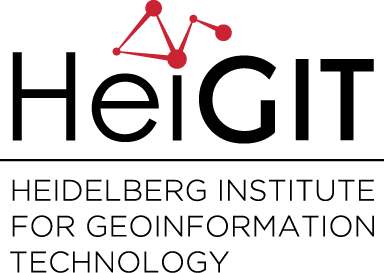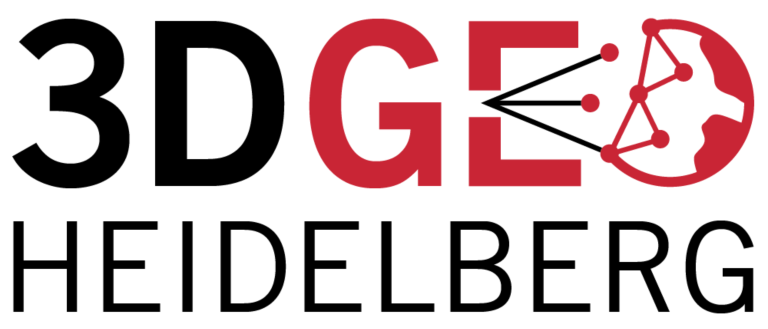Category: Research
-
ISPRS Education and Capacity Building Initiatives 2018
The International Society for Photogrammetry and Remote Sensing (ISPRS) is funding scientific and other initiatives, which will further improve its international status in the field of the photogrammetry, remote sensing and spatial information sciences, and will therefore benefit all ISPRS members. For 2018, seven Education and Capacity Building Initiatives projects were selected. GIScience Heidelberg is…
-
Open Positions: Geographic 3D Point Cloud Analysis (Full-time PhD / Postdoc Position)
Heidelberg University invites applications for one full-time PhD student and one Senior Researcher (Postdoc) for “Geographic 3D Point Cloud Analysis” in the 3D Geospatial Data Processing Group (Prof. B. Höfle) at the Department of Geography. The 3DGeo group is also affiliated with two research centers – the Interdisciplinary Center for Scientific Computing (IWR) and the…
-
Stellenausschreibung für Studentische Hilfskraft für Online-Umfragen / Webentwicklung
Das Heidelberg Center for the Environment (HCE) verfügt über zahlreiche inhaltlichen und methodischen Kernkompetenzen im Bereich „Umwelt“ an der Universität Heidelberg. Diese sollen über einen Online-Fragebogen systematisch erfasst und anschließend auf einer interaktiven Webseite visualisiert und zugänglich gemacht werden. Für die technische Umsetzung der Online-Umfrage zur Datenerfassung und für die graphische und dynamische Darstellung der…
-
Introducing the ohsome OSM History Analytics Platform
The big spatial data analytics team at HeiGIT is currently developing the ohsome OpenStreetMap history analytics platform. Our aim is to make OSM’s full-history data more easily accessible for various kinds of data analytics tasks on a global scale. OpenStreetMap (OSM) is a freely available map of the world to which everyone may contribute geographic…
-
3D micro-mapping: Towards assessing the quality of crowdsourcing to support 3D point cloud analysis
Crowdsourcing has been widely applied to extract information from 2D geodata sources such as satellite imagery. In this new study published in the ISPRS Journal of Photogrammetry and Remote Sensing we apply this technique to the growing field of 3D point cloud analysis. This work has been conducted in our 3D-MAPP Project which was funded…
-
Trace element partitioning in fluvial tufa reveals variable portions of biologically influenced calcite precipitation
Freshwater tufas are widespread phenomena in karst environments denoting important terrestrial paleo-environmental and paleoclimate archives. Additionally, many tufa sites are UNESCO world natural heritages, which emphasizes their societal importance (e.g. Jiuzhaigou, China; Plitvice, Croatia) and the demand for comprehensive conservation and monitoring strategies. Formation of tufas is controlled by numerous factors. The latest publication –…
-
Vorbesprechung GP/Übung: Physiogeographische Geodatenerfassung im Hochgebirge (Ötztal)
Die Veranstaltung “Physiogeographische Geodatenerfassung im Hochgebirge (Ötztal)” wird im Sommersemester 2018 zwischen 29.07.2018 und 04.08.2018 in Obergurgl, Tirol, Österreich, durchgeführt. Die verpflichtende Vorbesprechung findet am Fr. 02.02.2018, 11:30., R132/INF348, statt. Die Veranstaltung ist eine Zusammenarbeit zwischen Geoinformatik (Prof. Höfle, K. Anders) und Physiogeographie (Dr. Hecht) und bietet die einzigartige Möglichkeit verschiedenste Methoden der Geodatenerfassung an…
-
14. Modellierungstag Rhein-Neckar am 1. Februar 2018
1. Februar 2018 – 14:00 Uhr Mathematikon Im Neuenheimer Feld 205 Konferenzraum 5. Etage 69120 Heidelberg Der Modellierungstag Rhein-Neckar eröffnet Praktikern und Wissenschaftlern die Gelegenheit, Innovationen zur Diskussion zu stellen, Gemeinsamkeiten und Unterschiede der verwendeten Modellierungsansätze herauszuarbeiten und den gegenseitigen Erfahrungsaustausch zu pflegen. Weitere Informationen finden Sie hier: http://www.modellierungstag.de/ Programm 14:00 Michael Winckler (IWR, Universität…
-
Highly Cited Paper in Geosciences: Eitel, Höfle et al. (2016)
Point clouds and our 3DGeo research in Heidelberg are going beyond 3D, such as the new research project Auto3Dscapes. A detailed analysis of this research frontier has been published in Eitel, Höfle et al. (2016): Beyond 3-D: The new spectrum of lidar applications for earth and ecological sciences. The paper has just become a highly…
-
OSMlanduse.org + Remote Sensing = New conterminous land use data set for Germany released – filling gaps in OSM through machine learning
Land use data created by humans (OSM) was fused with satellite remote sensing data, resulting in a conterminous land use data set without gaps. The first version is now available for all Germany at OSMlanduse.org. When human input (OSM data) was absent a machine generated missing land use information learning from human inputs and using…
-
Zwei besondere öffentliche Vorlesungen zur Geodatenerfassung
Liebe Studierende aller Semester und Studiengänge, ich möchte Sie herzlich zu zwei besonderen Veranstaltungen im Rahmen der Vorlesung “Geodatenerfassung” in die Geographie einladen, die Sie sicher interessieren könnten: Montag, 22.01.2018 um 9.15 im gHS (INF 230, COS): Spezialvorlesung: Amtliche Geodaten bei der Stadt Heidelberg: Gewinnung, Nutzung und Vorhaltung. Hubert Zimmerer, Leiter des GIS der Stadt…


